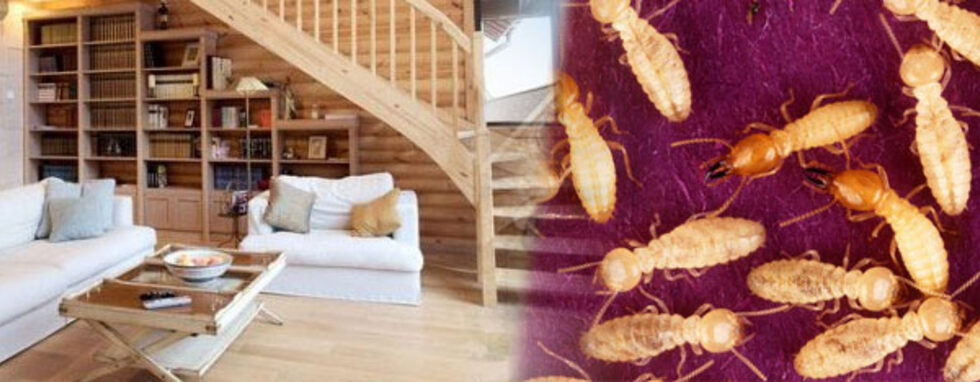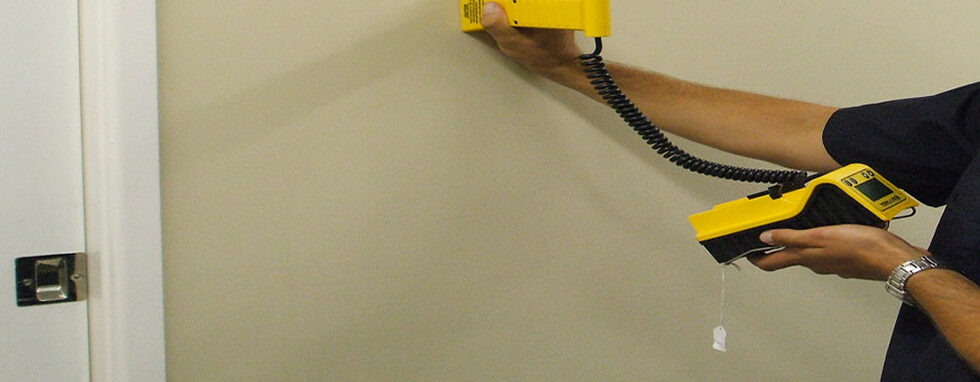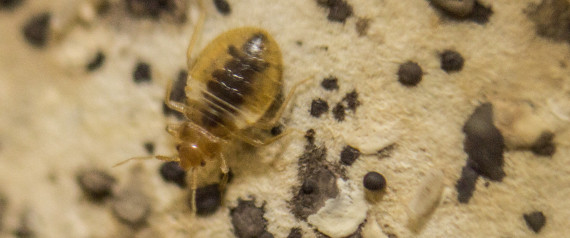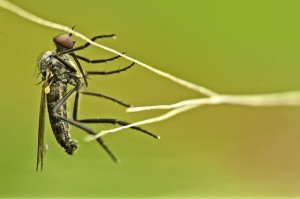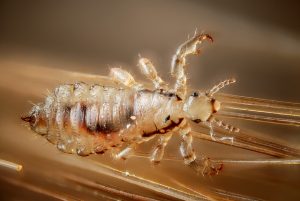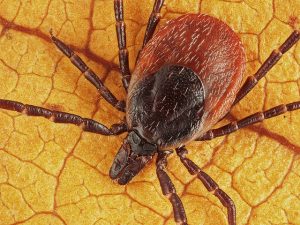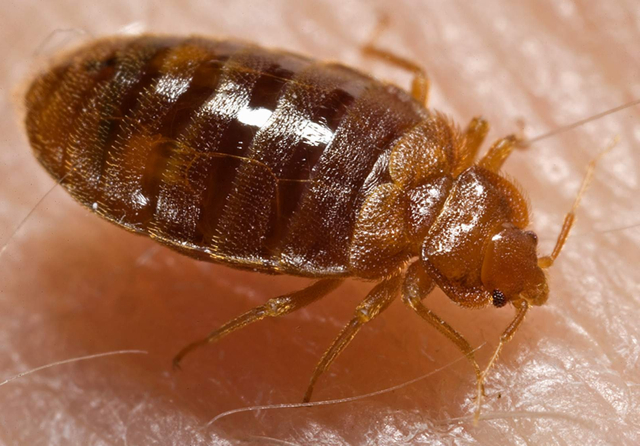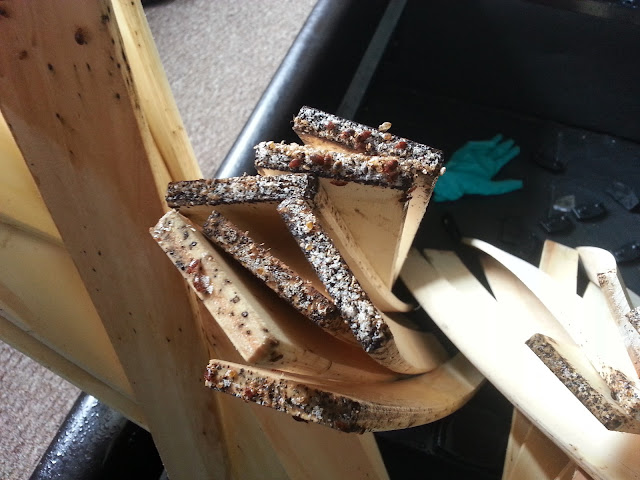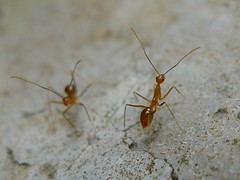Most people are very intolerant of cockroaches, and for good reasons; these pests can adversely affect human health in several ways. They can contaminate food, imparting an unpleasant odor and taste. They potentially can transmit disease organisms on their body parts. They can enter human ear canals, and they sometimes gnaw on the fingernails of sleeping children.
In addition to possible disease transmission, cockroach excrement and cast skins may cause allergies in some people. In fact, cockroach-induced allergies and asthma are some of the most serious problems caused by these pests. Symptoms of cockroach allergy include sneezing, runny nose, skin reactions, and eye irritation.
Asthma-related health problems from cockroaches seem to be most severe among children in inner-city areas, but they may also be significant even in nonurban children. In one study of 476 asthmatic inner-city children, half of the children’s bedrooms had high levels of cockroach allergen in dust. That study also found that children who were both allergic to cockroaches and exposed to high levels of cockroach allergens had three times as many hospitalizations a year compared with other children.
The extent of disease transmission by cockroaches is not clear. Some health officials see no association between cockroaches and disease and think that cockroaches are merely nuisance pests. However, many organisms that cause human diseases have been found on the legs, other body parts, or fecal pellets of cockroaches. Several researchers have reported data indicating that the insects may be most commonly implicated in the transmission of Salmonella, a bacterium that causes gastrointestinal upset.
Which Kind of Cockroach Do You Need to Control?
The species of pest roaches that occur in Mississippi can be divided into two groups: “small roaches” and “large roaches.” Small roaches are only about ½ inch long as adults, while large roaches are more than 1 inch long as adults. Of course, the immature stages, known as nymphs, of either group are much smaller than the adults. Newly hatched nymphs are less than ⅛ inch long.
Although there are several cockroach species in the Southeast, the small roaches (German cockroach and brown-banded cockroach) and the complex of large roaches (smoky-brown cockroach, brown cockroach, and American cockroach) are the most common and the most problematic. Several other species occur in the state, but many of them breed outdoors and are only occasionally found inside. Because these other roach species do not normally establish reproducing populations inside our homes and buildings, they are not considered to be serious pests. However, it is still important to be aware of these species so you can avoid spending money unnecessarily. For example, if you found two woods roaches that were brought in with firewood, misidentified them as German cockroaches, and hired a professional pest control company to control German cockroaches, you would be wasting a lot of money. See the section on “Other Cockroaches” at the end of this publication for information on identification and biology of some of the less common cockroach species.
The first step in preventing or controlling cockroaches is to know which species you are trying to control. If you want your efforts to be successful, it is especially important to distinguish between German cockroaches and the large roaches. Fortunately, this is easy to do because there is a big difference in the sizes of the adults. Adult German cockroaches are only about ½ inch long and have two dark stripes on the front part of their back. Adult large roaches are more than 1 inch long. Because their habits and the methods used to control them are similar, it is not necessary to be able to distinguish the different species of large roaches.
German Cockroach
This is the roach most dreaded and abhorred by homeowners and apartment dwellers alike. German cockroach, Blatella germanica, is the species most commonly involved in chronic indoor infestations. They occur worldwide and thrive indoors where they have ready access to food and water. German cockroaches are especially common and problematic in multifamily housing, as well as restaurants and other commercial facilities. They can also infest single-family homes. This is the species that is most often associated with cockroach-induced allergies in children and adults. It is also one of the most difficult roaches to control because it develops resistance to insecticides and “aversion” to baits.
Description: Adult German cockroaches range from light brown to dark brown, are slightly over ½ inch long, and are easily identified by the two dark-brown stripes on the front part of the back. The wingless nymphs are smaller and have two dark-brown stripes down the full length of the back.
Biology: German cockroaches are indoor pests that are rarely seen outdoors because they can’t survive outdoors. These roaches can’t live without us. They only live and thrive where they can live in close association with humans. German cockroaches are most common in kitchens and bath areas where they have ready access to food and water. Because of their small size and flattened body shape, cockroaches can easily hide in protected areas such as wall voids and cracks and crevices beneath and behind cabinets and cupboards. They shun light and prefer to forage under cover of darkness.
German cockroaches feed on a wide variety of organic materials, including human foods to which they can gain direct access, as well as crumbs and dried residues resulting from spills and splatters or dirty dishes. They also feed on pet food, as well as crumbs and spills that occur in pet feeding areas. In bath areas, roaches feed on dried sputum and other bodily emissions and on soiled clothing and diapers. They also feed on the dead bodies and excrement of other roaches.
Like other roaches, German cockroaches deposit their eggs inside a purse-like egg case, known as an “ootheca,” which contains approximately three dozen eggs. Unlike most other roaches, German cockroach females carry their egg cases with them until, or just before, the eggs hatch. Like the adults, nymphs have chewing mouthparts and feed on the same food as adults. It takes 2–6 months for German cockroach nymphs to become adults, and adults can live as long as 9 months. Under favorable conditions, German cockroaches can develop high populations. Dried particles resulting from German cockroach feces, shed skins, and bodies of dead roaches are a key cause of asthma and allergy problems for people living in heavily infested buildings.
German Cockroach Control
Before beginning cockroach control efforts, be sure you know which species you are trying to control. Is it the German cockroach or one of the large roach species? Methods for treating German cockroaches differ considerably from those for smoky-brown cockroaches or other large roaches. Also, there are quite a few nonpest/outdoor species of roaches in the state.
Because German cockroaches are strictly indoor pests, you need to focus all control efforts indoors. Sanitation is the most important management tool for German cockroach control. In single-family dwellings, good sanitation is often all that is needed to prevent infestations. When infestations occur, sanitation is still the backbone of the control effort, but there are many other useful methods. Consider the particular situation you are trying to control, and choose one or more of the methods discussed here to supplement your sanitation and exclusion efforts.
Key Steps for Control of German Cockroaches
- Declutter to make cleaning and treatment easier.
- Vacuum crumbs inside cabinets and behind and under appliances and furniture.
- Clean up food spills and other potential food sources.
- Store all food, pet food, garbage, and other food sources in bug-proof containers.
- Apply boric-acid dust to cracks, crevices, and voids according to label directions.
- Apply appropriate bait stations or gel baits according to label directions.
- Maintain good sanitation to limit availability of cockroach food sources.
Sanitation: Although German cockroaches can occur in the most immaculately kept home or restaurant, they thrive especially well in cluttered, untidy conditions where they have ready access to food. Good housekeeping practices that limit the amount of food available to cockroaches greatly limit their ability to survive and reproduce, while also increasing the potential for successful control.
Store food in the refrigerator or in bug-proof containers so that cockroaches can’t get to it. Clean up crumbs and dried accumulations of food resulting from spills, splatters, or boilovers. In addition to keeping the exposed surfaces of kitchen areas clean, it is important to avoid accumulations of dirty dishes and to clean under and inside cabinets to remove crumbs and other food sources. Keep stoves, toasters, and other food-preparation appliances free of crumbs and dried food spills. Vacuum regularly, and clean inside cabinets and under and around appliances such as ovens, dishwashers, and refrigerators to prevent the accumulation of food in protected areas where roaches prefer to hide. Give special attention to preventing—or promptly cleaning—spills that run into cracks and crevices such as those that often exist between stoves or other appliances and adjacent cabinets.
Take the garbage out regularly, and line cans with garbage bags to prevent the accumulation of food on the inner walls of the can. Be aware that containers designated for recycling can be a prime breeding site if not properly maintained. Stacks of empty pizza boxes or empty drink containers can serve as fertile breeding grounds for cockroaches.
Other aspects of sanitation include regular cleaning of bath areas, cleaning around pet feeding areas, limiting the amount of time pet food is exposed, repairing water leaks or condensation problems, regular laundering to prevent accumulations of dirty clothes, and avoiding accumulations of debris, such as cardboard boxes, that can provide hiding places for roaches.
German cockroaches are most common in kitchen and bath areas where they have ready access to food and water. But they will readily infest other areas of the house if food is available. Heavy populations will thrive in other living areas and around couches, recliners, beds, or other furniture if crumbs or other food particles are allowed to accumulate.
Exclusion: Because of their size and shape, adult German cockroaches can crawl through cracks less than ⅛ inch wide, and nymphs can get through much smaller cracks. Caulk or otherwise seal cracks and crevices that provide access to wall voids and other potential refuges. Seal around entry points for plumbing and electrical conduit to prevent roaches from having easy access to good hiding places and to minimize movement between apartment units. Exclusion is especially important in multifamily dwellings. Although it is rarely possible to completely prevent German cockroaches from moving between apartments, any exclusion efforts that help reduce movement will aid control.
Traps: Several companies sell glue traps that can be used to catch cockroaches. Traps are useful survey tools to determine if, or where, infestations exist or to gauge the effectiveness of control efforts. But they are not control tools and will not provide effective stand-alone control.
Baits: Baits are the most effective treatments for controlling German cockroaches. They are safe, easy to use, and highly effective when used correctly (Table 1). When combined with good sanitation and exclusion practices, baits can provide effective control of German cockroaches with minimal use of insecticide. Gels, pastes, or child-proof bait stations are especially useful for homeowners. Some baits are also formulated as dusts or fine granules, but these products are more useful for control of large roaches. Be sure to read and follow all label directions, especially when using baits in areas where food is prepared or stored.
Gel baits can be especially effective, but they must be used correctly. Use multiple placements of small amounts of bait—drops no larger than a pea. Place baits in areas where they will be easily accessible to roaches but inaccessible to children and pets. Some gel bait labels recommend spacing bait placements every 2 feet, but read and follow directions for the specific product you are using. Reapply as often as required to maintain a constant supply of fresh bait. Unconsumed bait dries out over time and becomes unpalatable to roaches.
Do not apply insecticide sprays in areas where baits are used because the sprays can repel roaches and prevent them from eating the bait. Baits work best when supplemented with good sanitation. After emptying cabinets and vacuuming crumbs, dead insects, and other debris, use a flashlight to identify roach hiding places and then place baits in these areas. Roaches feed on baits especially well when deprived of other food sources. German cockroach populations develop “bait aversion” if they are repeatedly exposed to the same bait. If they do not readily take the first bait you try, switch to another brand or type of bait. Some bait stations contain two different types of bait in the same station in an effort to avoid bait aversion.
Insecticide sprays: Insecticide sprays are generally less effective at controlling German cockroaches than large roaches (Table 2). However, when applied properly, residual insecticide sprays can quickly reduce heavy indoor roach populations. Their use is sometimes necessary in special situations, such as in an empty apartment that is heavily infested with German cockroaches. Be sure to choose insecticides that are specifically labeled for indoor use in kitchens or food preparation areas. Read the label carefully before treating, and follow all label directions when treating.
Products containing pyrethroid insecticides such as cyfluthrin, bifenthrin, deltamethrin, cypermethrin, or esfenvalerate will remain effective for several weeks, providing residual control of roaches that are exposed to treated surfaces. These products are available as aerosol sprays, as dilute ready-to-use sprays, or as spray concentrates that must be mixed with water before application. Use sprayers that produce a small pin stream of spray that can easily be directed into cracks and crevices. Some aerosol sprays come with a small, plastic straw that makes it easier to inject spray into cracks and crevices. If you are trying to control a heavy infestation, consider using an insect growth regulator (IGR), such as pyriproxyfen or hydroprene (Table 3), in combination with a residual insecticide spray, as discussed in the next section.
An insecticide treatment is only as good as the care taken in applying it. The key to success with residual sprays is to locate and treat all cracks, crevices, and voids where roaches can hide. Remove items from cabinets, and use a vacuum to clean crumbs, dead roaches, roach or mouse droppings, and other debris. Clean surfaces with soap and water or liquid cleaners if necessary. Avoid spraying inner cabinet surfaces that will be directly exposed to stored food, dishes, and utensils. Use a flashlight to identify cracks and crevices that should be treated. Don’t forget to look up, toward the upper back of the cabinet, and treat any voids or cracks you find there. Be sure to treat voids located behind, above, or underneath cabinets. Be aware of crevices that exist between cabinet backs and walls where roaches like to rest. In most cases, the deep cleaning part of this treatment process provides greater benefit for roach control than the insecticide spray. Wait for spray to dry before replacing stored items.
Unfortunately, a single insecticide treatment, no matter how thoroughly applied, will rarely be sufficient to totally eliminate a heavy infestation. Be sure to re-treat in a few weeks, or follow up with some other type of supplemental treatment, such as baits. Always keep in mind that sanitation is the most important part of any roach control program.
Insect growth regulators (IGRs): IGRs (Table 3) work by disrupting the development of immature roaches and/or preventing eggs from hatching. These products are especially useful in control of German cockroaches. Although they are slow acting and do not actually kill adult roaches, IGRs have a long-term effect on cockroach populations by controlling immature roaches and/or interfering with reproduction. Hydroprene and pyriproxyfen are the active ingredients contained in most commercially available IGR treatments. Because IGRs provide long-lasting control and are effective against insecticide-resistant strains, it is a good idea to apply an IGR in combination with an insecticide spray. IGRs are also useful when applied in combination with baits because exposure to IGRs causes German cockroaches to eat more bait.
Aerosol foggers: Although many total-release aerosol foggers are labeled and sold for roach control, aerosol foggers are not very useful or effective for cockroach control. At first, they may seem to be a quick, convenient way to treat, but they are not necessarily the best or most efficient way to apply roach treatments. Most of the insecticide ends up on exposed surfaces where it is more likely to be contacted by humans and pets rather than roaches. Also, aerosols do not penetrate well into the cracks, crevices, and voids where roaches hide. Aerosol foggers may be useful in certain situations, such as for initial population reduction in empty apartments that are heavily infested, but they should be supplemented with other methods of control.
Insecticidal dusts: Dusts (Table 4) are an especially effective way to treat wall voids and other, otherwise inaccessible refuge areas. Most commercially available dusts contain deltamethrin, boric acid, diatomaceous earth, or silica gel. One of the advantages of insecticidal dusts is that, when applied to dry environments, they provide long-lasting residual control. Apply dust using a bulb duster or some other type of specialized dust applicator. Use the duster to inject small amounts of dust into cracks, crevices, and voids. When necessary, use a drill to make small access holes into voids. Avoid using too much dust, and do not apply dusts to exposed areas. When dust has been applied properly, you should not be able to see that dust has been applied. Dust applicators may be difficult to find locally, but you can order them from mail and Internet suppliers. A small, handheld bulb duster is sufficient for most home uses. Be sure to take appropriate precautions when treating around electrical outlets and switches.
Hire a professional pest control company: If you don’t have the time or inclination to do your own roach control, you can hire a professional pest control company to provide this service. Most pest control companies offer monthly or quarterly household pest-control contracts, with cockroaches being the primary target.
Professional pest-control technicians have access to effective insecticides and know how to use them safely. They know which treatments to use and how and where to apply them to control target pests while limiting unnecessary exposure. Still, they may need your help. Cluttered, overcrowded cabinets and closets can prevent proper treatment and make it difficult to obtain effective control, and poor sanitation can thwart the efforts of the best trained “bug man.” Visit with your pest control technician to find out what you can do to facilitate control.
Large Roaches
The term “large roaches” refers to a group of closely related species including the smoky-brown cockroach (Periplaneta fuliginosa), brown cockroach (Periplaneta brunnea), and American cockroach (Periplaneta americana). The smoky-brown cockroach is the most common species, but it is not uncommon to have more than one species in the same area. Although these roaches occur throughout the state, they are more common in the southern region, where milder weather favors sustained outdoor populations (outdoors, but in close association with buildings or other man-made structures).
Description: Adults have long, thread-like antennae, spiny legs, and long leathery wings extending to, or beyond, the tip of the abdomen. Color and size vary depending on species, but adults of all three species are over an inch long. Adult smoky-brown cockroaches are uniformly dark brown and approximately 1⅓ inches long. American cockroaches are somewhat larger, around 1½ to 2 inches, and reddish brown with lighter markings on the pronotum (front portion of the back). Brown cockroaches look much like smoky-brown cockroaches. Recently hatched nymphs are dark-colored with two white bands across the back. Older nymphs are shiny brown to reddish-brown and similar to the adults in general body shape, but they are smaller and lack wings. Because of the lack of wings, the segmented abdomen of the nymphs is obvious.
Biology: The biology of the large roaches is generally similar. Eggs are contained in a purse-like egg case, or “ootheca,” which contains 12–24 eggs. The females deposit their oothecae in protected locations. It normally takes at least 6 weeks for eggs to hatch. Depending on species and environmental conditions, it takes from 9 to 20 months for the nymphs to become adults. Adults live for many months.
Although smoky-brown cockroaches, as well as the other two species of large roaches, occur statewide, they are most common in the southern part of the state. High populations of large roaches may be found living in sewer drains, under the siding of buildings, around dumpsters and garbage cans, in and around piles of lumber or refuse, and in various outdoor habitats such as palm trees, hollow trees, landscape mulch, and leaf litter. These roaches also breed and develop inside buildings, especially where they have access to dark, protected areas such as inside hollow concrete blocks, wall voids, soffit voids, attics, crawl spaces, and basements.
Large Roach Control
Because the large cockroaches (smoky-brown cockroach, brown cockroach, and American cockroach) breed outdoors and indoors, control efforts for these pests must target both areas. In one of the most common situations, large roaches breed outside and occasionally invade the home but do not have established indoor populations.
Key Steps for Control of Large Roaches
- Identify and seal all potential entry points that provide insects access from outside.
- Move stacks of firewood, lumber, and other potential shelter sites away from the building.
- Keep outside garbage, pet food, and recycle items in bug-proof containers.
- Apply exterior perimeter insecticide treatments according to label directions.
- Use properly labeled insecticides indoors, around doors, and along baseboards as needed.
Sanitation: Although indoor sanitation plays a key role in managing indoor infestations of large roaches, sanitation efforts for large roaches should also be concentrated outdoors, in the area immediately surrounding the home. Keep outside garbage cans tightly covered. Store pet food in roach-proof containers and clean pet feeding areas regularly to prevent accumulations of spilled food. Avoid storing empty, unrinsed cans or drink bottles because the residues in these containers provide food for roaches. Avoid stacking firewood, lumber, boxes, or other refuse near the house, as these provide excellent shelter for roaches and other insect pests. Limit the use of organic mulches immediately adjacent to the house. This practice helps reduce cockroach populations and also reduces the potential for termites and home-invading ants. Ideally, organic mulches should not be used within 3–4 feet of the foundation. Use inorganic mulches like lava rock or pea gravel in this zone. Rake leaves and pine needles, and keep trees and shrubs pruned away from the house to minimize hiding places and ensure good ventilation. Do not allow ivy or other vines to grow on the side of the house because roaches and other insects hide and breed in this heavy vegetation. Avoid planting palm trees too near the house because they provide excellent shelter for large roaches.
Exclusion: Exclusion is the most effective tactic home and building owners can use to prevent or reduce indoor invasions by large roaches and other insects. Because of their flattened body shape, even adult large roaches can easily crawl under poorly sealed doors. Install door sweeps on the bottoms of doors, and use foam strips or spring metal strips to seal around remaining door edges. Be sure window screens are undamaged and fit properly. Use caulking, foam sealant, steel wool, or other appropriate materials to seal around pipes and other potential entry points. Check soffit vents and other attic vents to be sure that they fit tightly and are properly screened, and make any other repairs or corrections necessary to make the building as bug-tight as possible.
Baits: Although gel baits (Table 1) can be effective against large roaches, granular baits (Table 5) and bait stations designed specifically for large roaches (Table 1) are more useful. Bait stations designed specifically for German cockroaches are too small. Granular baits are especially useful for controlling large roaches around exterior building perimeters. Granular baits are usually intended for outdoor use, for application around outside building perimeters, or for application in basements, attics, storage rooms, wall voids, and other non-living areas. Granular baits contain active ingredients such as boric acid, hydramethylnon, indoxacarb, or imidacloprid. In living areas, use childproof bait stations specifically designed for large roaches or gel or paste baits that can be placed where they are inaccessible to children and pets.
Note that granular baits intended for fire ants usually do not work against cockroaches, and baits intended for cockroaches and other pests usually do not control fire ants.
Insecticide sprays: Although indoor insecticide sprays are not the most effective way to control large roaches, they are sometimes useful as supplemental treatments. Indoor insecticide treatments for large cockroaches are formulated as aerosol sprays, ready-to-use trigger pump sprays, or liquid concentrates that must be diluted with water and applied using hand-pressurized sprayers (Table 2). They contain active ingredients such as permethrin, bifenthrin, cyfluthrin, deltamethrin, esfenvalerate, or lambda-cyhalothrin. Apply these products as barrier treatments around doorways and other entry points, as well as along baseboards and beneath and behind appliances, to prevent roaches from entering or to control them shortly after they get inside. Read product labels for specific instructions.
Outdoor perimeter treatments: Outdoor perimeter sprays are especially useful for control of large roaches. Several insecticides are labeled for use around the outside perimeter of the house to control roaches and other pests (Table 6). These products contain active ingredients such as bifenthrin, cyfluthrin, lambda-cyhalothrin, or other pyrethroid insecticides. Many of them are labeled for application to exterior building surfaces, such as around doors and windows and the lower portion of the exterior wall, as well as to a band of ground around the perimeter. If the house has overlapping siding, remember that roaches like to hide in the resulting cracks; direct sprays into these areas. Most labels also allow treatment of crawl spaces, areas under porches, and similar settings. Outdoor perimeter treatments may be applied using a pump-up hand sprayer or a hose-end applicator. Some of these products are sold in a ready-to-spray, hose-end applicator. Be sure to read product labels carefully before purchase and follow all label directions.
Hire a professional pest control company: One of the easiest and most effective ways to establish and maintain control of large roaches is to hire a professional pest-control company. Most companies offer quarterly or monthly services designed to control large roaches and other home-invading insects. Often, such services involve application of outdoor perimeter treatments. They might also include application of granular baits, as well as more targeted application of insecticide sprays around potential entry sites and shelter areas. For control efforts to be successful, it is important for property owners to maintain effective exclusion and sanitation in and around the building.
Note that exterior perimeter treatments applied by pest control companies to control large roaches and other home-invading insects are not intended to control termites, and these treatments do not protect a building from termite attack.


